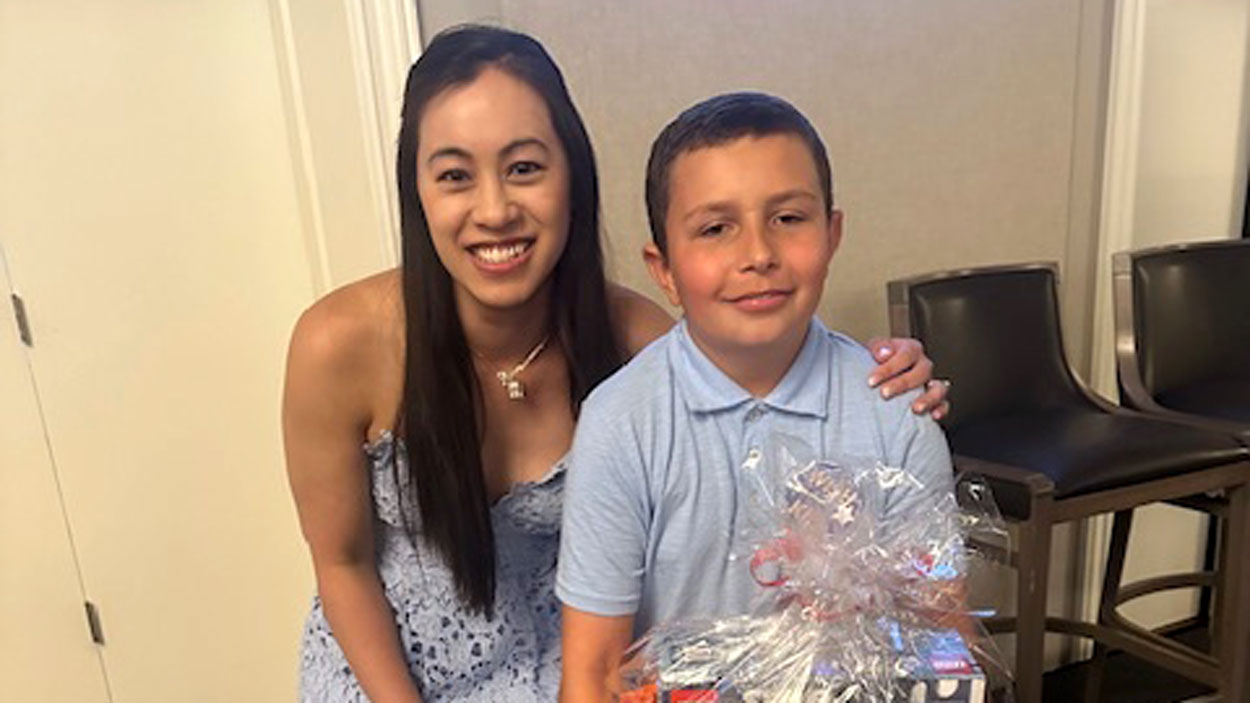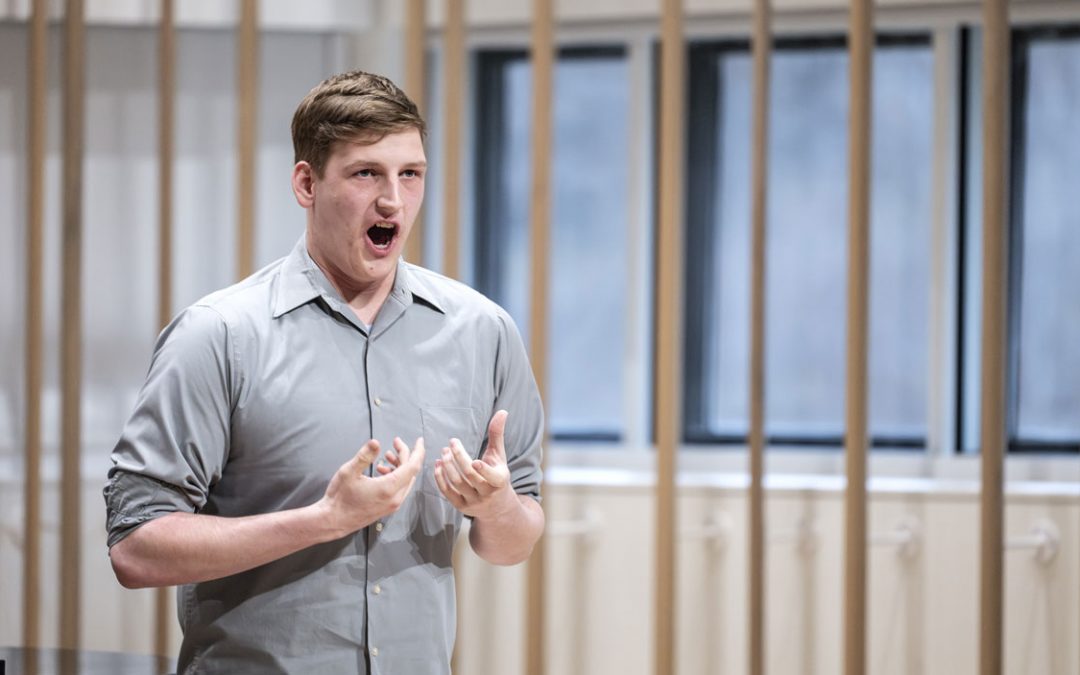
Optometry alum Dr. Joann Adams was recognized by a young patient’s family at a fundraiser for the Make-A-Wish Foundation. (Photo courtesy of Dr. Joann Adams)
Dr. Joann Adams knows well that eye health is connected to a patient’s overall health and well-being, helping to identify systemic issues such as diabetes or high blood pressure. Recently, though, the optometrist experienced a firsthand example that will stay with her for the rest of her career.
Adams, a 2018 graduate of the College of Optometry at the University of Missouri–St. Louis, is an optometrist at EYE-Q Vision Care in Fresno, California. Each day, Adams sees a high volume of patients with varying needs, from standard glasses and contact lens to patients in need of a new prescription to triage for urgent patients dealing with disease and other rare cases.
On Jan. 13, 2022, Adams experienced a particularly rare case when she saw a new patient, 7-year-old Andrew, for a complete eye exam. Andrew’s parents had brought him in to see the optometrist after his teacher had noticed that he wasn’t able to see the board in the classroom properly and his parents observed his poor gait and mobility.
During the refraction test, Adams noticed that Andrew was not just seeing poorly but that he wasn’t able to sit up straight during the exam, often slouching over. After she dilated his eyes and was able to get a better view into the back of his eyes, she discovered something serious: The nerve on both of Andrew’s eyes was swollen, indicating brain swelling.
“Usually when kiddos have swelling of the nerve, it’s due to high intracranial pressure, which is maybe one of the first differentials,” Adams said. “But with a lot of the physical changes that he did have, such as mobility, and as poor vision as he’s had, I had to suggest that he go to the emergency room after being seen by me.”
Andrew’s parents immediately took him to the emergency room at Valley Children’s Hospital. After an MRI scan found a brain tumor the size of a plum, the doctors recommended that Andrew have emergency brain surgery the very next day.
Since then, Andrew has had several more successful brain surgeries and, through the Make-A-Wish Foundation, was able to fulfill his dream of swimming with dolphins in Hawaii. He is now healthy, back in school and, Adams said, starting to get back to a normal way of life. She’s made it a point to keep in touch with Andrew and his parents ever since that fateful day in the exam room.
“It felt personal, especially being the first one to find it,” Adams said. “Usually, as optometrists, we’re not the first ones finding the brain tumor because a lot of different signs will emerge, and a lot of imaging gets done before they get into our chair. His parents were saying that they did notice a lot of his physical changes, his mobility changes. They took him to various doctors. In this very rare case, his primary care was a bit stumped by what was going on with him. When I did my exam on him, it was very apparent that it was more than just bad vision.”
Earlier this year, Andrew’s family hosted a fundraiser for the Make-A-Wish Foundation to raise money and awareness and to thank the organization for helping Andrew in his time of need. Adams – along with Andrew’s initial neurologist, Dr. Malendee Brown – was honored for the role she played in helping to diagnose the tumor and ultimately save Andrew’s life.
“I felt very honored,” Adams said. “That’s probably the first and the last time that may happen, as far as me personally. It felt very special.”
Knowing Andrew is happy and healthy today after receiving the care he needed, Adams is looking back fondly on the experience.
“I’m very grateful to do what I do and have the opportunity to serve my community,” she said.














